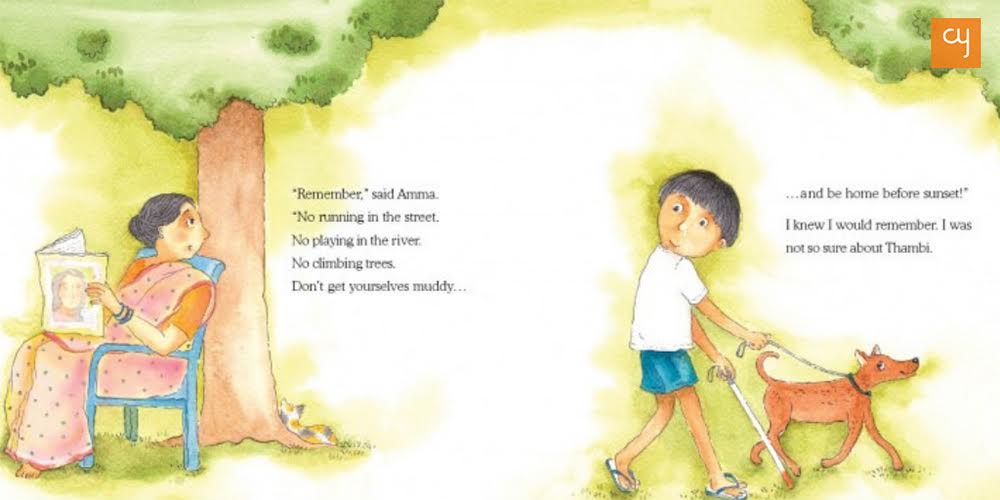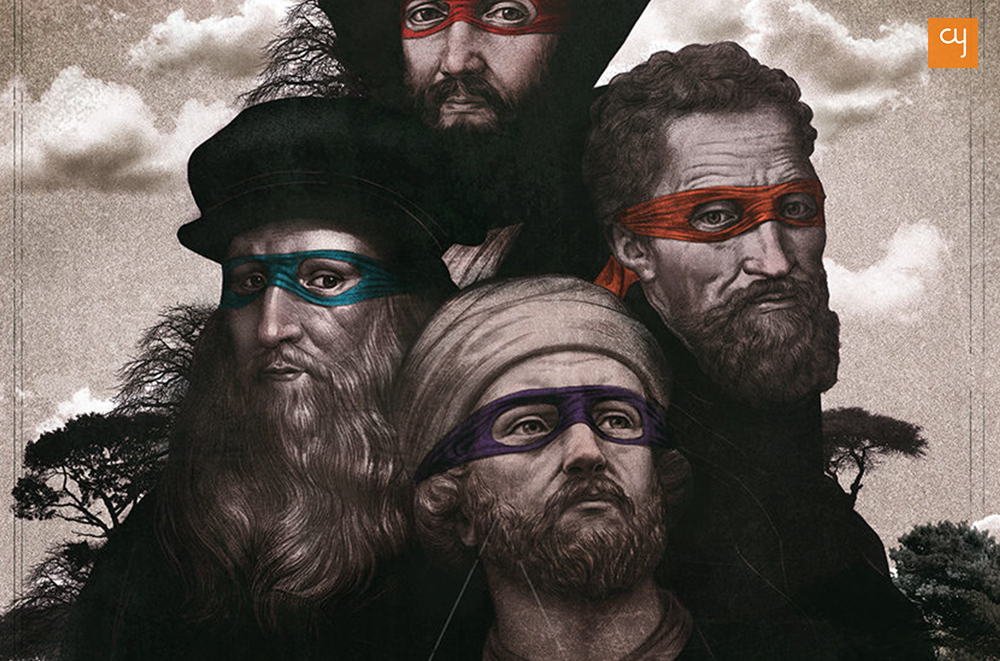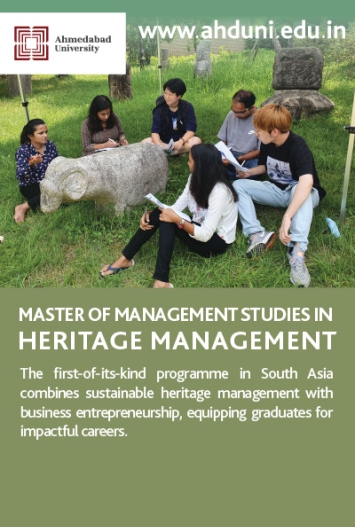Leading Thinkers on Creativity and the Common Cultural Misconceptions that Shroud the Word
‘Creativity’ is today’s choicest term. And yet much mysticism has come to cloud this word over time. Unlike the illusive imagery that accompanies the pronouncement of this word – I’m thinking of hair suspended in a perpetual state of static, of feverish dances with paint on canvas, and of heads in ovens – creativity is a far more accessible and friendly enterprise than we give it credit for. As evocative of awe as this phenomenon has always been, it’s also worthy of some deconstruction. Here are a few of the common myths about creativity that have well served their time and deserve burial.
1. You’re either born creative or not
The notion that creativity is somehow an inherited trait – that either you have it or you don’t – is one of the most commonly cited myths. Sure, art seems to run in certain families and not in others. But research done on fraternal and identical twins have shown that differences between results on creativity tests are similar in both sets of twins, deeming the genetic component relatively insignificant. While recent studies indicate that some people may possibly be more creatively endowed at birth, a stimulating environment and upbringing seems to play a much greater role in enhancing our creativity than genetics. For all we know, all of us quite possibly come into this world as creative beings and are gradually conditioned out of that ability, as many alternative educators -such as of the Montessori school of thought – might argue.
“Creative thinking is a skill. It’s not just a matter of individual talent,” said Edward de Bono, the father of the term ‘lateral thinking’. The inheritance myth demeans the fact that creativity is more like a muscle -a muscle that needs exercise to continue developing – and by ignoring this potential it turns us, instead, into silent spectators of our own fate, fulfillers of our own negative prophecies.
2. Creative people are right-brained, and therefore left-handers are more creative
While there is truth to the science that the right brain is home to a lot of the kind of visualisation and holism that creativity seems to derive from, what this ‘right-brain’ myth overlooks is that creativity is equally dependent on critical thinking, which falls largely under the purview of the left hemisphere. Hence, in essence, it is not the right brain that is the domain of creativity, but actually the cross-communication between the two hemispheres. The presence of ‘large-scale brain networks’ across the whole brain, says psychiatrist Szabolcs Keri, is what allows for the kind of associations between seemingly unconnected ideas that is the hallmark of creativity. This calls to mind F. Scott Fitzgerald’s words that “the test of a first-rate intelligence is the ability to hold two opposed ideas in the mind at the same time, and still retain the ability to function.”
The notion that left-handed people are more creative does seem to have some truth as well. Artists are more likely to be left-handed than the general population, according to author Leonard Shlain, who estimates that 30-40% of students at art schools are left-handed. People assume that because left-handed people have a more dominant right hemisphere, they are more creative. But this is where the myth is mistaken again. The reason why a lot of left-handed people appear to be disproportionately creative may have more to do with the fact that they live in a world that’s designed for right-handed people. As a result, they are forced to use their right hands to turn doorknobs and to use appliances. Left-handers are, as a result, quite often more adept at using both hands than many right-handers are. What this means is that their two brain hemispheres are used to conversing with each other more often, writes psychologist Ben Ambridge, emphasising how handedness is not an indication of creativity but that ‘inconsistent handedness’ may be, arguing that “the flexible of hand tend to be flexible of brain”. So in essence, if right-handed people started using both hands more deliberately since childhood – by playing instruments, for instance – they might be facilitating such cross-communication in the brain. Einstein, who was most probably a right-hander though many would argue otherwise, was known to have many of his best scientific ideas while playing the violin.

3. The world needs more original thinkers
This myth is propped up by the popular folklore of the ‘eureka’ moment that has daunted civilisations of people into thinking that creativity is some kind of divine phenomenon -where ideas come from an ethereal source and get transplanted into our brains. The truth is that creativity is much more like a jigsaw puzzle – a giant board with unassembled pieces of existing ideas in our mind that float around till two seemingly unconnected pieces seem to fit together and form an entirely new idea between themselves. Einstein called this process ‘combinatorial play’, a kind of cross-disciplinary fusion that occurs after an incubation period, wherein information from the past is retrieved and sorted, whose subconscious randomness can lend that almost magical appearance.
As filmmaker Kirby Ferguson says, ‘creativity is a remix’. We all build upon others’ ideas, like Apple built upon Xerox. The whole notion, therefore, that ideas should be patented is a dangerous one because it prevents the inherent nature of interconnections that creative thinking thrives on, whereby we acknowledge that our ideas develop as combinations of existing ones – that we stand on the ‘shoulders of giants’, as they say. The originality myth is a dangerous one because it can make us over-confident in a blind-folded search for ‘new’ and ‘original’ ideas. Steve Jobs famously said, “Creativity is just connecting things. When you ask creative people how they did something, they feel a little guilty because they didn’t really do it, they just saw something.”

4. Mental illness is a creative force
Though there is much research to back up the relationship between creativity and mental illness – with the profession of writers often experiencing a disproportionate dosage of depression and occasionally, like Hemingway, bipolar-like symptoms – the ‘tortured genius’ myth, based also on examples of Van Gogh and Sylvia Plath, is misleading because it drives people away from pursuing the creative life; and also because we cannot be sure if one does lead to the other. It might possibly be the other way round, that people with mental health issues are drawn towards creative work as they find it therapeutic.
In a study of creative writers, psychologist Frank X. Barron found that, although the average writer fell in the top 15% on measures of psychopathology, writers also scored unusually high in scores of mental health. This kind of contradiction seems to be one of the hallmarks of a creative person, which the researchers found may have to do with the fact that they delve into themselves more deeply than the average person does, hence appearing to display more of the traits that we associate with mental illness. In another study, Dr Donald MacKinnon noted that “the creative person has the courage to experience opposites of his nature and to attempt some reconciliation of them.”
Largely, however, most creative people find their depressive periods to be the least conducive for creativity as it impairs their ability to concentrate. In other words, as Nancy Andreason found in her research, creative people become successful at their work not because of their mental predilection but despite it. But by promoting the ‘angsty artist’ myth and glorifying mental illness, we are only doing disservice to people who suffer from it and require help. Because creativity, as Charles Bukowski pointed out, stems from a desire to celebrate life, not to lament it.
5. Brainstorming is the best way to generate ideas
The past decade has witnessed a rise in the phenomenon of the ‘Groupthink’ that has been gaining alarming credence in companies, with people opting to generate ideas through brainstorming sessions. Susan Cain, author of ‘Quiet’, points out, to the contrary, that research suggests that most people are creative when they have privacy. Organizational psychologist Adrian Furnham also wrote, “The evidence from science suggests that business people must be insane to use brainstorming groups.” In the presence of more gregarious co-workers, people have been proven to succumb to peer pressure and follow the more popular opinion. Cain advocates that it’s far more beneficial if people are allowed to think individually and then come together to share their ideas.
This ‘New Groupthink’, as Cain calls it, however, has today picked up in schools as well, with many classrooms being increasingly designed to promote collaboration, with pods of student groups coming together to collectively study and brainstorm on exercises. It’s not always a healthy practice, as it can shut out the introverts in the group who thrive on solitary thinking and reflection; and yet, these introverts are often amongst the most creative individuals, according to research by psychologists Mihaly Csikszentmihalyi and Gregory Feist. As Apple’s co-founder Steve Wozniak, the quieter counterpart to Steve Jobs, said, “Most inventors and engineers I’ve met are like me … they live in their heads. They’re almost like artists. In fact, the very best of them are artists. And artists work best alone.”

6. Creative problem-solvers are the need of the hour
A lot of the prevalent use of the word ‘Creativity’ with a capital C, when it’s commodified by corporatized universities and companies, tends to portray it as a marketable need of the hour. In the age of the entrepreneur, the common adage is that creative ‘problem-solving’ will pave the road ahead. While this idea is surely relevant and significant, it ignores the fact that more than problem-solving, it is ‘problem finding’ that may be the need of the hour. In a study conducted by social scientists Jacob Getzels and Mihaly Csikszentmihalyi in the ’60s, several art students were brought to a room having a table with 27 eclectic objects arranged on it. They were asked to pick a few objects, arrange a still life, and draw them out. Some artists swiftly picked up objects and proceeded with the task at hand. Others proceeded more slowly, picking up and turning objects and deliberating over several before settling for the given task. As the researchers saw it, the first group had a problem-solving approach towards the given task ‘how can I produce a good drawing?’ – while the second group was trying to create a problem out of the given task ‘what good drawing can I produce?’ A decade later, the researchers traced these two groups of artists and found that the more successful artists were those who indicated increased ‘problem-finding’ abilities in the study, the latter group.
As artist Chuck Close once put it, “our whole society is much too problem-solving oriented. It is far more interesting to [participate in] ‘problem creation.’” In other words, a society that’s not just driven by quick-fix ‘how’ solutions, but equally by the broader ‘what’s and those elusive yet intrinsic ‘why’s.
Yatra Archives

 How Tulika Books is creating impact in children’s lives through picture books
Nandini Varma
How Tulika Books is creating impact in children’s lives through picture books
Nandini VarmaAug 21, 2019
A children’s book about a boy who feels like a girl. And about a child brought up by grandfathers. These are some of the stories published by Tulika Books, who have been making children’s picture books since 23 years. Little…
 Dalgona Coffee: A worldwide social media trend about home-made café experience
Harshil Shah
Dalgona Coffee: A worldwide social media trend about home-made café experience
Harshil ShahApr 2, 2020
While the lockdown has ignited various trends on social media, one that has received a major global following is #DalgonaCoffee. With thousands of posts on its name, here’s all you need to know about the Dalgona Coffee wave. I first…
 Leonardo, Michelangelo, Raphael and Donatello—Artists or Teenage Mutant Ninja Turtles characters?
Harshil Shah
Leonardo, Michelangelo, Raphael and Donatello—Artists or Teenage Mutant Ninja Turtles characters?
Harshil ShahNov 5, 2019
Did you ever wonder where the Teenage Mutant Ninja Turtles’ characters got their names from? Well, your search is complete. Here is a brief introduction of the artists from whom the creators of TMNT took inspiration. Teenage mutant ninja turtles,…
 The call of the mountains: orthopaedic Dr Yatin Desai’s advice on trekking
Himanshu Nainani
The call of the mountains: orthopaedic Dr Yatin Desai’s advice on trekking
Himanshu NainaniMay 24, 2019
In this piece 64 year old Dr Yatin Desai, shares with CY his inspiring story of how to scale towering mountains with utmost ease and how this life adventure activity can shape human character and health. Chances are high that…




